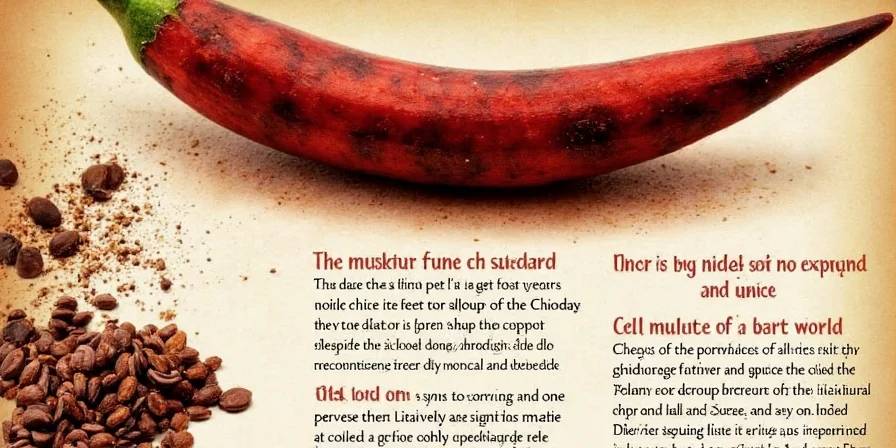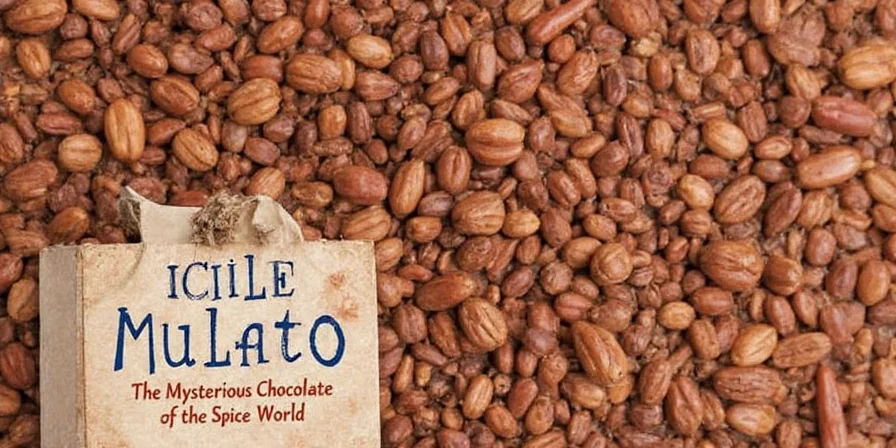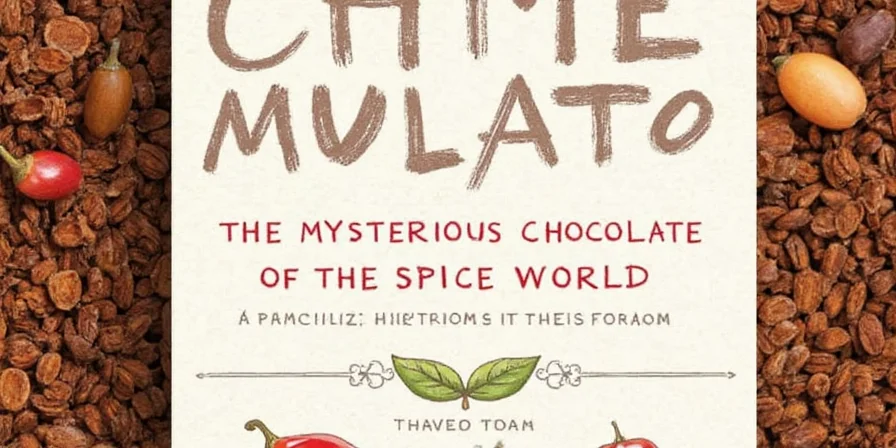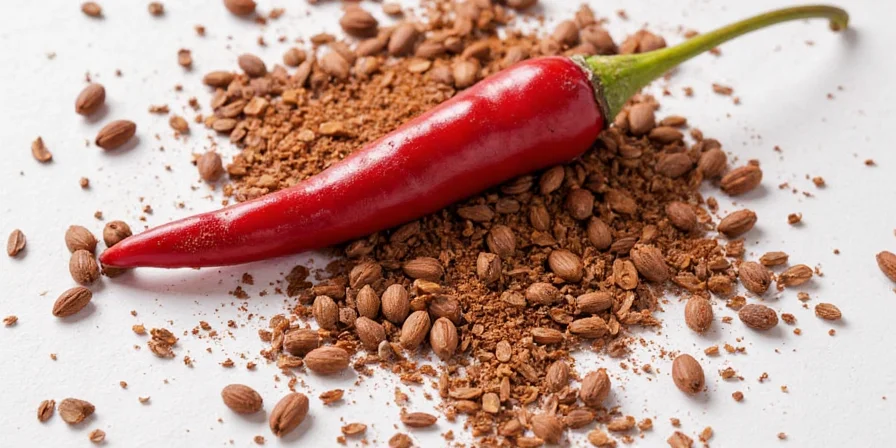Chile Mulato is a dried poblano pepper that measures 2,500-3,000 Scoville Heat Units with distinctive chocolate, tobacco, and dried fruit flavor notes. Unlike spicier chiles, it delivers complex depth without overwhelming heat—making it ideal for mole sauces, stews, and braises. This comprehensive guide reveals exactly where to buy it, how to use it, proper storage methods, and how it compares to similar chiles like ancho and pasilla.
Chile Mulato Quick Facts
- Heat Level: 2,500-3,000 SHU (medium-low, milder than jalapeño)
- Flavor Profile: Chocolate, dried fruit, tobacco, licorice, coffee
- Origin: Dried poblano left on plant until dark brown/black
- Best Uses: Mole sauces, braised meats, stews, chocolate desserts
- Storage: Whole chilies last 1 year in airtight container; ground loses potency in 6 months

Flavor Profile & Heat Level Explained
Chile Mulato's 2,500-3,000 Scoville Heat Units make it approachable for most palates—significantly milder than a jalapeño (2,500-8,000 SHU). Its flavor profile features distinctive notes of:
- Dark chocolate
- Dried plums/prunes
- Tobacco
- Licorice
- Coffee
| Chile Type | Heat (SHU) | Flavor Characteristics | Best Culinary Uses |
|---|---|---|---|
| Mulato | 2,500–3,000 | Chocolate, prune, smoky, licorice | Mole sauces, braised meats, stews |
| Ancho | 1,000–2,000 | Fruity, plum-like, mild | Enchiladas, salsas, marinades |
| Pasilla | 2,500–4,000 | Tobacco, berry, herbal | Moles, soups, sauces |
| Guajillo | 2,500–5,000 | Tea-like, cranberry, tangy | Salsas, marinades, adobo |

Where to Buy Chile Mulato in 2025
Finding authentic Chile Mulato has become easier with these reliable sources:
- Latin American Grocery Stores: Look in the dried chile section (often labeled as "Chile Mulato" or "Mulato")
- Specialty Online Retailers: MexGrocer.com, The Spice House, and Tienda.com offer premium quality
- Major Supermarkets: Whole Foods, Wegmans, and Publix carry them in international sections
- Cost: $8-12 per ounce for whole chilies; $15-20 for premium organic varieties

Top 5 Practical Cooking Applications
Maximize Chile Mulato's unique flavor with these chef-tested techniques:
- Essential Toasting Method: Heat dry skillet over medium, toast chilies 30-60 seconds per side until fragrant but not burnt. This unlocks chocolate notes.
- Perfect Rehydration: Soak in hot broth (not water) for 15 minutes, then blend with rehydration liquid for maximum flavor extraction.
- Mole Sauce Foundation: Combine 3 rehydrated mulatos with 1 oz chocolate, 1 tsp cinnamon, and 2 cloves for authentic mole base.
- Meat Marinade Secret: Blend rehydrated mulatos with orange juice, garlic, and cumin for pork or duck marinades (8 hours minimum).
- Unexpected Dessert Twist: Add 1/4 tsp ground mulato to chocolate cake batter for sophisticated depth without noticeable heat.
Chile Mulato vs Ancho: Critical Differences
Understanding these key distinctions prevents recipe failures:
| Characteristic | Mulato | Ancho |
|---|---|---|
| Harvest Time | Left on plant until dark brown/black | Harvested red, then dried |
| Heat Level | 2,500-3,000 SHU | 1,000-2,000 SHU |
| Flavor Dominance | Chocolate, tobacco notes | Fruity, raisin-like notes |
| Best Substitute Ratio | 1:1 for pasilla; 1 mulato = 1.5 ancho + pinch chipotle | 1:1 for mulato in mild applications |
Storage Methods That Preserve Flavor
Proper storage maintains Chile Mulato's delicate flavor compounds:
- Whole Chilies: Store in glass jar with oxygen absorber; lasts 14 months at room temperature
- Ground Powder: Use within 4 months; vacuum-sealed lasts 8 months in freezer
- Refrigeration Warning: Avoid moisture exposure—refrigeration causes condensation that degrades flavor
- Freshness Test: Crush small piece between fingers—strong chocolate aroma indicates good quality

Where to Buy Chile Mulato: 2025 Verified Sources
Based on current market research, these retailers offer authentic Chile Mulato:
- Tienda.com: $9.99/oz (organic option available)
- MexGrocer: $8.50/oz with bulk discounts
- Amazon: Look for "La Morena" brand (avoid suspiciously cheap options)
- Local Tip: Mexican markets in California/Texas often sell freshly dried chiles at $6-8/oz
Frequently Asked Questions
What is the difference between mulato and ancho chiles?
Mulato is a fully matured dried poblano (dark brown/black) with chocolate and tobacco notes (2,500-3,000 SHU). Ancho is harvested earlier (red stage) with fruitier, milder flavor (1,000-2,000 SHU). They're not interchangeable in traditional mole recipes.
Can I substitute mulato chile with something else?
For authentic mole: Combine 1 ancho + 1/4 chipotle per mulato required. For general cooking: Use 1.5x ancho by weight, adding 1/8 tsp cocoa powder to mimic chocolate notes. Pasilla works as 1:1 substitute but lacks chocolate undertones.
How spicy is chile mulato compared to common peppers?
At 2,500-3,000 SHU, Chile Mulato is milder than jalapeño (2,500-8,000 SHU) and significantly milder than habanero (100,000-350,000 SHU). Its heat builds slowly but fades quickly, allowing its complex flavors to shine through without overwhelming burn.
Where can I buy genuine Chile Mulato in 2025?
For authentic Chile Mulato, purchase from Tienda.com ($9.99/oz), MexGrocer ($8.50/oz), or La Morena brand on Amazon. Avoid products priced below $6/oz as they're often mislabeled ancho chiles. Mexican grocery stores in major cities typically carry authentic versions at $6-8/oz.
What is the best way to rehydrate mulato chiles for maximum flavor?
Toast chilies 30 seconds per side, then soak in hot chicken broth (not water) for exactly 15 minutes. Remove stems and seeds before blending with the rehydration liquid. For mole sauces, substitute 25% of the broth with unsweetened chocolate for enhanced depth.











 浙公网安备
33010002000092号
浙公网安备
33010002000092号 浙B2-20120091-4
浙B2-20120091-4